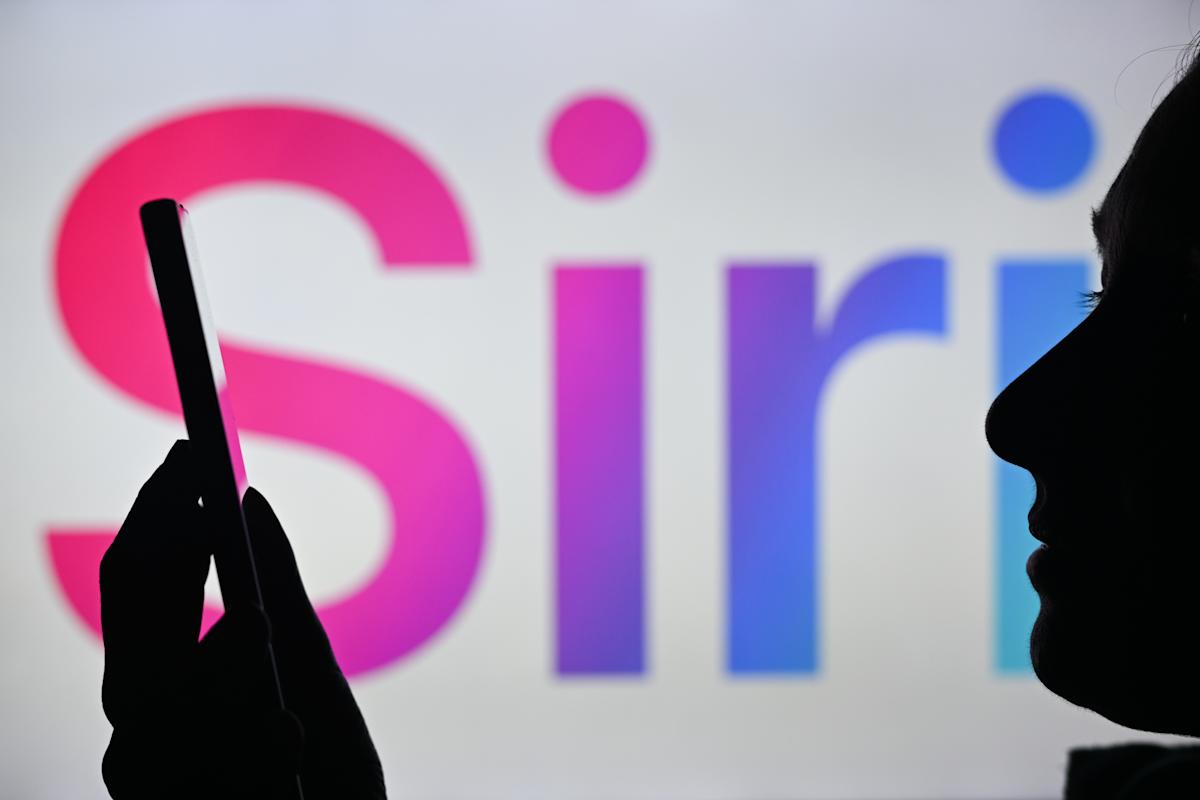Analyzing Apple's Strategy For LLM-Powered Siri

Table of Contents
Apple's Current Siri Limitations and the Need for LLM Integration
Siri's current capabilities fall short compared to its LLM-powered competitors. Its limitations hinder its ability to provide truly intuitive and helpful user experiences. These weaknesses include:
- Limited contextual understanding: Siri often struggles to maintain context across multiple turns in a conversation.
- Difficulty with complex requests: Multi-step or nuanced instructions often result in inaccurate or irrelevant responses.
- Struggles with nuanced language: Siri's interpretation of subtle linguistic cues, sarcasm, or figurative language remains underdeveloped.
- Lack of robust generative capabilities: Unlike LLMs, Siri cannot generate creative text formats, summaries, or other forms of content.
Integrating LLMs is crucial for addressing these shortcomings. The benefits of such integration are significant:
- Enhanced natural language understanding: LLMs excel at interpreting the subtleties of human language, leading to more accurate comprehension of user requests.
- Improved response accuracy: LLMs can provide more relevant and helpful responses, even for complex or ambiguous queries.
- Ability to handle complex queries: Multi-step requests and intricate instructions become manageable with the advanced processing power of LLMs.
- Potential for more engaging interactions: LLMs can facilitate more natural and dynamic conversations, leading to a more enjoyable user experience. The possibilities extend to personalized responses and proactive assistance.
Apple's Likely Approach to LLM Integration in Siri
Apple has historically prioritized privacy and on-device processing. This philosophy will likely shape its approach to LLM integration in Siri. We can anticipate:
- Emphasis on privacy: Apple will likely prioritize on-device or federated learning models to minimize data transmitted to external servers. This aligns with its strong brand reputation for user data protection.
- Potential for on-device or hybrid LLM processing: To balance privacy with performance, a hybrid approach, processing some aspects of requests on-device and others in the cloud, might be adopted. This requires powerful, energy-efficient hardware.
- Focus on seamless integration with the existing Apple ecosystem: LLM-powered Siri will likely be tightly integrated with other Apple services and devices, offering a cohesive user experience across the board.
Apple may also pursue strategic partnerships or acquisitions to bolster its LLM capabilities:
- Collaboration with existing AI research groups: Partnerships with leading academic institutions or research labs could provide access to cutting-edge LLM technology.
- Strategic acquisitions of smaller AI companies specializing in LLMs: Acquiring smaller companies specializing in specific LLM applications, such as speech recognition or natural language generation, could rapidly accelerate Siri's development.
A phased rollout of LLM features in Siri is also highly probable:
- Initial focus on specific use cases: Early releases might focus on specific applications where LLMs can provide immediate improvements, such as enhanced dictation or more advanced search capabilities.
- Gradual expansion of LLM capabilities across all Siri functions: Over time, LLM functionality will likely be integrated across all aspects of Siri, gradually enhancing its overall performance.
Advantages of Apple's Strategy for LLM-Powered Siri
Apple's strategic approach offers several key advantages:
- Strong ecosystem and user base: Apple boasts a massive and loyal user base, providing a ready market for an enhanced Siri. The seamless integration with other Apple devices ensures broad adoption.
- Strong brand reputation for security and privacy: Apple's commitment to privacy is a significant competitive advantage, particularly in the sensitive area of voice assistants. This trust builds a strong foundation for user adoption.
- Potential competitive advantages stemming from on-device processing: On-device processing offers reduced latency, improved privacy, and the ability to function offline—significant advantages over cloud-based competitors. This is particularly critical in areas with unreliable network connectivity.
- Potential strengths in specific areas like voice dictation and translation: Apple’s existing strengths in voice technology could be leveraged to create best-in-class LLM-powered dictation and translation tools.
Challenges Facing Apple in Implementing LLM-Powered Siri
Despite its advantages, Apple faces significant challenges:
- Computational challenges of on-device LLM processing: Running large LLMs on devices requires significant processing power and battery life, posing technical hurdles. Smaller, more efficient LLMs optimized for mobile devices will be critical.
- Balancing privacy and functionality with LLMs: Striking the right balance between preserving user privacy and collecting sufficient data to train and improve LLMs requires careful consideration of ethical and responsible AI practices. Transparency and user control are essential.
- Maintaining the user-friendly nature of Siri: Adding advanced LLM capabilities without compromising Siri's intuitive and easy-to-use interface is a crucial design challenge. The added functionality must be seamlessly integrated.
Conclusion
Apple's strategy for integrating LLMs into Siri centers on its strengths: a robust ecosystem, a fiercely loyal user base, and an unwavering commitment to privacy. While the computational challenges of on-device LLM processing and the need to balance privacy with functionality pose significant hurdles, Apple's resources and expertise position it to compete effectively in the rapidly evolving landscape of voice assistant technology. Success hinges on carefully managing these challenges to deliver a truly enhanced Siri experience. Stay tuned for further developments in Apple's pursuit of an LLM-powered Siri. The future of voice assistants is rapidly evolving, and Apple's strategy will be crucial in determining the next generation of smart, intuitive, and privacy-respecting voice interfaces. Follow our blog for more in-depth analyses on LLM-powered Siri and other cutting-edge technologies.

Featured Posts
-
 April 13 Nyt Mini Crossword Solutions
May 20, 2025
April 13 Nyt Mini Crossword Solutions
May 20, 2025 -
 Leclercs Future At Ferrari The Potential Impact Of Hamiltons Arrival
May 20, 2025
Leclercs Future At Ferrari The Potential Impact Of Hamiltons Arrival
May 20, 2025 -
 Tzenifer Lorens I Ithopoios Kalosorizei To Deytero Paidi Tis
May 20, 2025
Tzenifer Lorens I Ithopoios Kalosorizei To Deytero Paidi Tis
May 20, 2025 -
 Tadi Shmit I Napad Na Detsu Tri Godine Sukoba I Pranje Ruku
May 20, 2025
Tadi Shmit I Napad Na Detsu Tri Godine Sukoba I Pranje Ruku
May 20, 2025 -
 Ia Et Creation Litteraire L Heritage D Agatha Christie Remis Au Gout Du Jour
May 20, 2025
Ia Et Creation Litteraire L Heritage D Agatha Christie Remis Au Gout Du Jour
May 20, 2025
Latest Posts
-
 Admirals Bribery Case Examining The Systemic Issues Within The Navy
May 20, 2025
Admirals Bribery Case Examining The Systemic Issues Within The Navy
May 20, 2025 -
 Us Four Star Admiral Sentenced Understanding The Corruption Charges
May 20, 2025
Us Four Star Admiral Sentenced Understanding The Corruption Charges
May 20, 2025 -
 Bribery Charges Against Top Admiral Highlight Navys Cultural Challenges
May 20, 2025
Bribery Charges Against Top Admiral Highlight Navys Cultural Challenges
May 20, 2025 -
 Retired Four Star Admirals Corruption Conviction Details And Impact
May 20, 2025
Retired Four Star Admirals Corruption Conviction Details And Impact
May 20, 2025 -
 Retired 4 Star Admiral Found Guilty Details Of The Four Bribery Charges
May 20, 2025
Retired 4 Star Admiral Found Guilty Details Of The Four Bribery Charges
May 20, 2025
